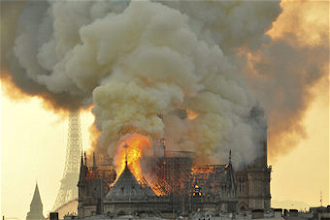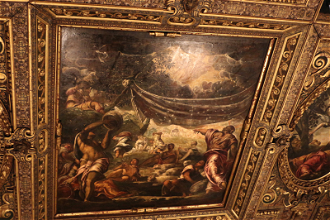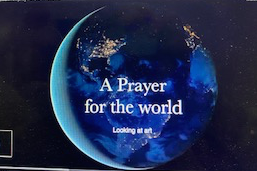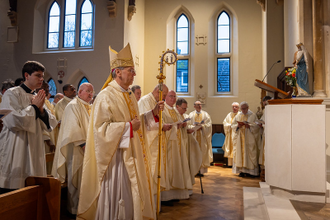Today's Gospel in Art - Christ and the Adulterous Woman
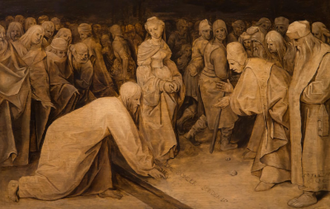
Christ and the Woman Taken in Adultery, by Pieter Breughel the Elder 1565 © Courtauld Institute of Art, London
Gospel of 30th March 2020 - John 8:1-11
Jesus went to the Mount of Olives. At daybreak he appeared in the Temple again; and as all the people came to him, he sat down and began to teach them.
The scribes and Pharisees brought a woman along who had been caught committing adultery; and making her stand there in full view of everybody, they said to Jesus, 'Master, this woman was caught in the very act of committing adultery, and Moses has ordered us in the Law to condemn women like this to death by stoning. What have you to say?' They asked him this as a test, looking for something to use against him. But Jesus bent down and started writing on the ground with his finger.
As they persisted with their question, he looked up and said, 'If there is one of you who has not sinned, let him be the first to throw a stone at her.' Then he bent down and wrote on the ground again. When they heard this they went away one by one, beginning with the eldest, until Jesus was left alone with the woman, who remained standing there. He looked up and said, 'Woman, where are they? Has no one condemned you?' 'No one, sir' she replied. 'Neither do I condemn you,' said Jesus 'go away, and do not sin any more.'
Reflection on the Grisaille Painting
After yesterday's painting by Rembrandt from Holland, we now move slightly further south, to Flanders, with this painting by Pieter Breughel. Painted in 1565, it is a small grisaille composition. 'Grisaille' means that it is executed entirely in shades of grey, beige or other neutral greyish colours. This gives a sculptural element to the painting and a certain serenity. As these types of paintings look like drawings, they can betray the hand of a less talented artist more easily than a full-colour painting. We see Jesus encountering the adulteress who was brought before Him by the Scribes and Pharisees. Adultery was punishable by death by stoning at the time. Brueghel depicts the woman as one of the few graceful figures in the scene. Jesus stoops down to write in Flemish on the ground before her feet: 'he that is without sin among you, let him cast the first stone at her'. A few unthrown stones lie on the floor to the left of the woman.
Jesus speaks to two groups of people in our Gospel reading of today. He first talks to the Scribes and Pharisees, who showed themselves to be most uncaring and completely lacking in compassion for the poor woman. By speaking to them, Jesus puts an abrupt end to the unpleasant situation. The stones in our reading and painting are symbolic of gossip and hurtful comments. Do not cast them, Jesus tells us. When we sin, we would have to admit that this is even throwing stones at Christ Himself…
The second conversation is between Jesus and the adulterous woman. Jesus treats her completely differently than the Pharisees. He does not condemn her. The way Jesus thinks of her is completely different to the way society thinks of her. Our own individual value is not what others may say about us (good or bad), but what Jesus would say about us!…
Today's story - https://christianart.today/reading.php?id=375
Christian Art Today - https://christianart.today



